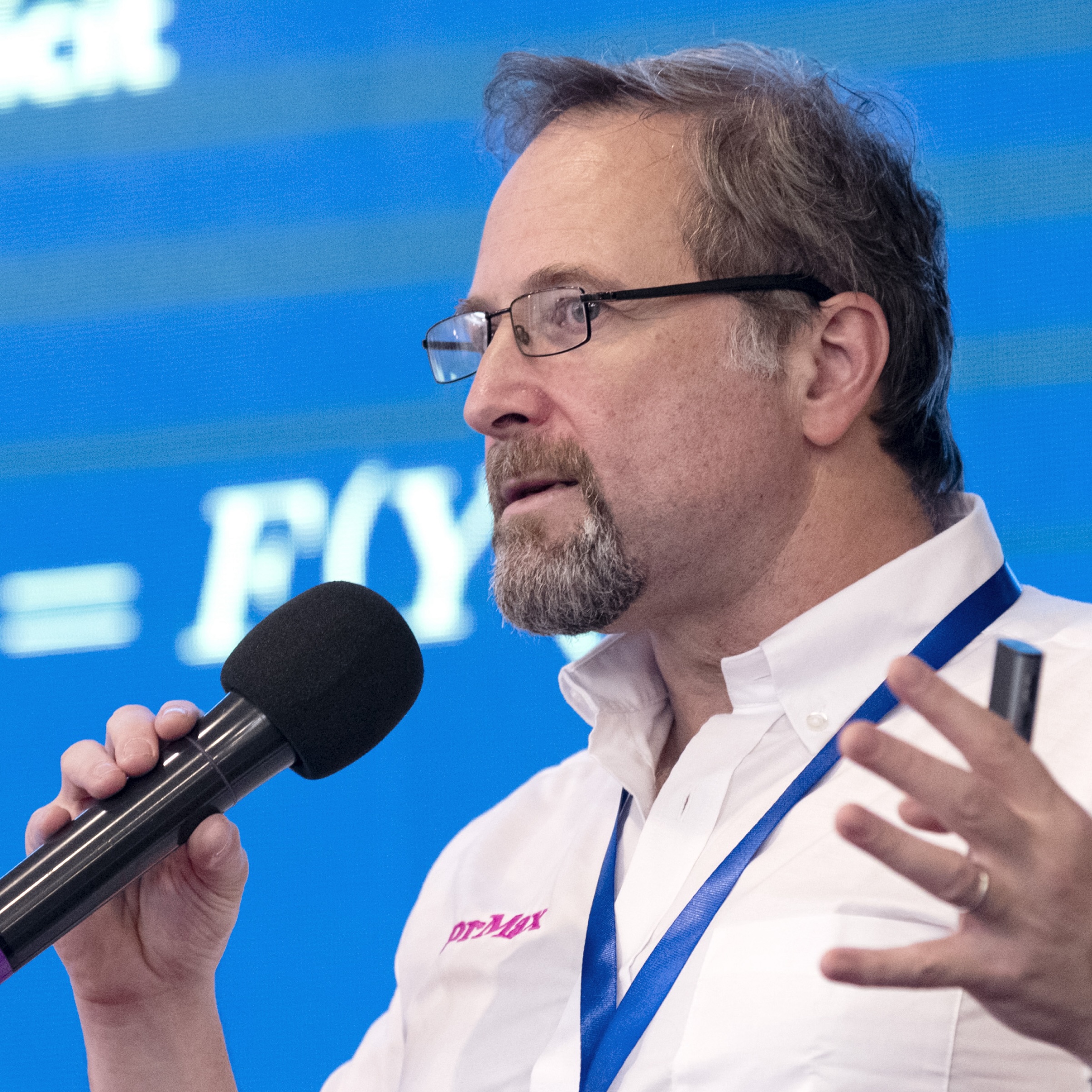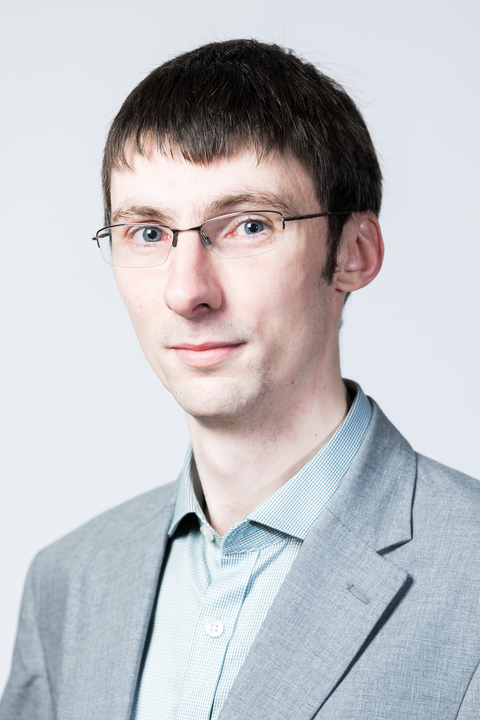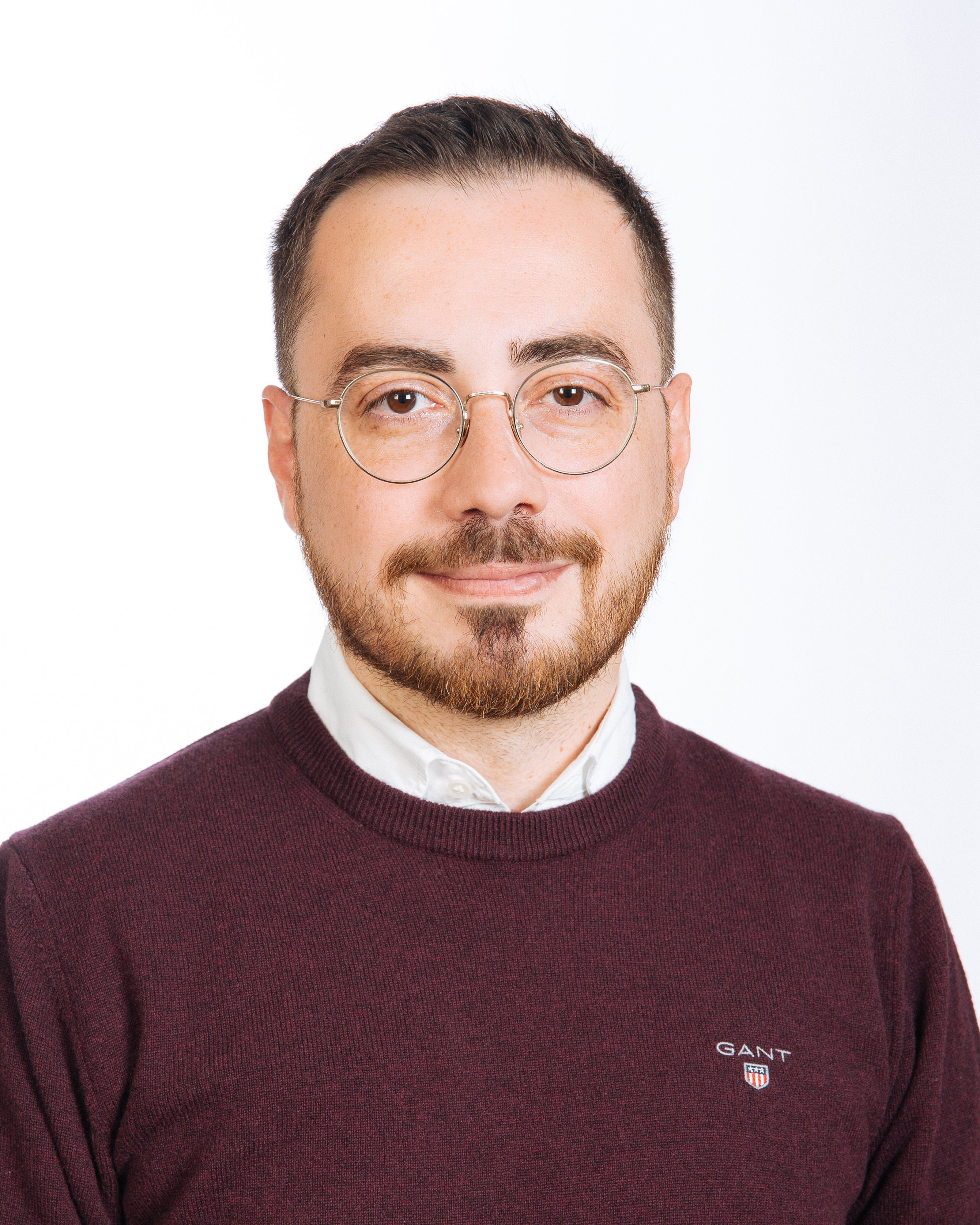
Infrastructure and Environment
Sean is Professor of Future Construction and Director of Centre for Future Infrastructure, within the School of Engineering at the University of Edinburgh. He joined the University in June, 2020. He is a Fellow of the Institute of Acoustics, Fellow of the RSA and is an Honorary Fellow of RIAS.
From 1988 to 1992 he studied at Heriot-Watt University (BSc Building Economics & QS) and worked with Costain civil engineering on the Newport Bypass and Conwy submerged tunnel project. In 1992 he commenced an EPSRC funded PhD investigating complex vibration analysis for timber frame buildings using statistical energy analysis. The complex mathematical models were then applied to other structures and he took up a research associate post for 3 years jointly funded by EPSRC and Defence Evaluation Research Agency (DERA) investigating sound and vibration in rotary and fixed wing aircraft. Between 1994-99 he was an invited guest scientist at the government construction research laboratories in Canada (NRC), Italy (IENGF) and Germany (PTB). During his time in Italy and Germany he also led research into medical acoustics and the potential positive impact of sound and vibration stimuli on respiratory-cardio function for preterm infants, published in International Journal of Prenatal & Neonatal Medicine. In 2001 he joined RMP Acoustics and Napier University and was deputy director of the Building Performance Centre.
In 2002-04 he led the technical development of robust details for sound insulation for Part E of the building regulations, a complex project involving the design and construction of 1,400 new homes over 9 months with innovative acoustic engineering solutions. This led to a white paper before the UK Parliament published by Office of the Deputy Prime Minister. The designs, termed robust details for Part E regulations, have now been utilised in over 1 million UK homes and led to significant improvement in sound insulation and quality of life for home occupants.
From 2010 to 2020 he was Director of the Institute for Sustainable Construction managing 5 research centres involving offsite construction, energy, timber engineering, wood science technologies and noise & vibration. He was a founding member and led the UK consortia for the EU Cost Action (TU0901) involving 32 countries investigating future harmonisation of standards related to ISO 717. In 2009-2013 he led the Low Carbon Building Technologies Gateway applied research team, supporting with his colleagues over 200 new construction products and systems. He led the government review of the Scottish Offsite construction sector in 2012 and initiated the 11 universities partnership with industry to form the Construction Scotland Innovation Centre (CSIC). He led the £6M Housing, Construction & Infrastructure (HCI) Skills Gateway for Edinburgh & SE Scotland City Region Deal to support inclusive growth and future skills for construction, engineering and infrastructure. He has been an advisor to CEN and ISO committees and formed research networks with 40+ countries.
Key awards and nominations for the positive impact of applied research for industry, society and the environment include: Queens Anniversary Prize 2015, Queens Anniversary Prize 2009, Hon Fellowship of Royal Incorporation of Architects in Scotland, UK CIAT Centre of Excellence, Shortlisted for UK KTP of the Year 2013, First Proof of Concept for Construction (Scottish Enterprise) and over 40 project awards or nominations for industry joint projects including nominations for Housebuilding Product of the Year 2010, 2011, 2013.
His PhD supervision projects have included complex sound transmission in buildings, new refugee shelter designs and approaches, offsite construction, NDT of forest products to maximise engineering outcomes, design of new storm surge protection schemes developing the DAMMS framework and new resilient hanger solutions. His current research fields include resilience and infrastructure for coastal protection, large scale modular infrastructure approaches and ‘Horizon Net-Zero Carbon’.
He has led and co-invented 17 patented innovative construction products involving a range of companies including solutions for brownfield site substructure solutions, energy efficiency, structural enhancement for timber engineered systems and acoustic performance.
In 2018 he chaired the Scottish government working group on Future New Housing Construction Skills with the government report published in 2019 and recommendations were adopted in Programme for Government 2020. In 2020 he also contributed to the Scottish Construction Recovery Plan.
He currently serves on the Timber & Forest Industries Leadership Group (ILG), Construction Scotland (ILG) Skills Group, CSIC Innovation Champion and serves on a range of external committees and boards involved in innovation, construction regulatory compliance, housing, infrastructure and skills.
Published outputs and knowledge transfer activities include: 5 books involving sound insulation in structures, housing, technical standards and guidance documents; 9 government reports for 7 different UK/Scottish government departments, over 80 presentations to industry and government bodies, over 70 journal and invited conference publications.
- Bachelor of Science, Heriot-Watt University
- Doctor of Philosophy (PhD), Heriot-Watt University, Sound transmission in parallel plate structures
- Fellow of Higher Education Academy, FHEA
- Fellow of the Institute of Acoustics, FIOA
- Fellow of the Royal Society for Arts, Manufacturing and Commerce, FRSA
- Honorary Fellow - Royal Incorporation of Architects Scotland, HonFRIAS

I am an academic in composite materials technology with a particular interest in the development of lightweight structures to reduce the carbon footprint of transport industries such as aerospace and automotive. My current research line focuses on digital design of materials and the accelerated development of composite products with improved impact performance. I have interest in emerging manufacturing technologies such as 3D printing, automated fibre placement and low-cost compression moulding. My strategy is based on a coupled multiscale experimental and numerical approach to determine the role of the microstructure in the catastrophic failure of a component. Multiscale numerical techniques are also employed for design purposes, tailoring microstructural features such as fibre orientation and volume, to enhance ductility and strength.
- PhD, Technical University of Madrid (2016)
- MEng, University Carlos III Madrid (2011)
- BEng, University of Castilla - La Mancha (2008)
- Advanced Dynamics and Applications 5 / Dynamics 5
- Cohort Lead Mechanical Engineering

- D.Phil. in Electronics- University of York, UK, 1997
- University Degree (Ptychio) in Geology - Aristotle University of Thessaloniki, Greece, 1991
- Member of the European Association of Geoscientists and Engineers (EAGE)
- Member of the Society of Exploration Geophysicists(SEG)
- Engineering Geophysics
- Application of GPR for NDT of structures
- Computational Electromagnetics with emphasis in the FDTD method
- Numerical modelling of GPR

- D.Phil. in Electronics- University of York, UK, 1997
- University Degree (Ptychio) in Geology - Aristotle University of Thessaloniki, Greece, 1991
- Member of the European Association of Geoscientists and Engineers (EAGE)
- Member of the Society of Exploration Geophysicists(SEG)
- Engineering Geophysics
- Application of GPR for NDT of structures
- Computational Electromagnetics with emphasis in the FDTD method
- Numerical modelling of GPR

- PhD in Process and Chemical Engineering, University College Cork, Ireland, 2011
- BE in Process and Chemical Engineering, University College Cork, Ireland, 2008
- Chartered Member, Institution of Chemical Engineers (CEng MIChemE)
- Senior Member, American Institute of Chemical Engineers (MAIChE)
- Member, Engineers Ireland (MIEI)
- Chemical Engineering Design 3 (CHEE09015)
- Engineering Principles 1 (SCEE08012)
- Supervisor of study projects, undergraduate research projects and industry placements
My research focuses on the simulation of systems of granular materials. This has broad applicability including in both the chemical engineering (pneumatic conveyors, silos, granulators) and civil engineering (dams, sand element tests) disciplines. My research also includes improving the fidelity and performance of the simulation tools, in particular of the discrete element method (DEM).
Granular materials are ubiquitous. Around three-quarters of the raw materials used in industry are in a particulate form. Lots of economically significant, and safety-related, problems remain in handling these materials. Another example of a granular material is the soil beneath our feet; understanding the behaviour of the constituent particles has implications for ensuring the safety of structures.
The use of simulation tools such as DEM to study huge particulate systems has become increasingly viable as computational power has become cheaper. A major advantage of simulations is the ready availability of information which is difficult, if not impossible, to measure experimentally such as the forces acting on each individual particle at tiny time intervals. However, physical experiments remain essential to supplement the simulations, e.g., for calibration of model parameters and validation of any implemented model.
- Project Lead of CCC-ParaSolS: if you have an interest in simulations of granular materials and if you are based in the UK, why not join our Collaborative Computational Community in Particulate Solids Simulations?
- Our fork of LAMMPS which includes various additions of use for soil mechanics simulations is now available on GitHub as geoLAMMPS.
Research Profiles
- Discrete element method (DEM)
- Simulation of granular soil behaviour
- Attrition/wear of solid materials
- Pneumatic conveying of powders
I welcome enquiries from any prospective student with the appropriate engineering/science background who is interested in undertaking a PhD. Note that unless a project is advertised which specifies that funding is available, PhD funding would need to be secured in advance through a scholarship, sponsorship of the PhD, e.g., by industry, or self-funding.

- PhD in Process and Chemical Engineering, University College Cork, Ireland, 2011
- BE in Process and Chemical Engineering, University College Cork, Ireland, 2008
- Chartered Member, Institution of Chemical Engineers (CEng MIChemE)
- Senior Member, American Institute of Chemical Engineers (MAIChE)
- Member, Engineers Ireland (MIEI)
- Chemical Engineering Design 3 (CHEE09015)
- Engineering Principles 1 (SCEE08012)
- Supervisor of study projects, undergraduate research projects and industry placements
My research focuses on the simulation of systems of granular materials. This has broad applicability including in both the chemical engineering (pneumatic conveyors, silos, granulators) and civil engineering (dams, sand element tests) disciplines. My research also includes improving the fidelity and performance of the simulation tools, in particular of the discrete element method (DEM).
Granular materials are ubiquitous. Around three-quarters of the raw materials used in industry are in a particulate form. Lots of economically significant, and safety-related, problems remain in handling these materials. Another example of a granular material is the soil beneath our feet; understanding the behaviour of the constituent particles has implications for ensuring the safety of structures.
The use of simulation tools such as DEM to study huge particulate systems has become increasingly viable as computational power has become cheaper. A major advantage of simulations is the ready availability of information which is difficult, if not impossible, to measure experimentally such as the forces acting on each individual particle at tiny time intervals. However, physical experiments remain essential to supplement the simulations, e.g., for calibration of model parameters and validation of any implemented model.
- Project Lead of CCC-ParaSolS: if you have an interest in simulations of granular materials and if you are based in the UK, why not join our Collaborative Computational Community in Particulate Solids Simulations?
- Our fork of LAMMPS which includes various additions of use for soil mechanics simulations is now available on GitHub as geoLAMMPS.
Research Profiles
- Discrete element method (DEM)
- Simulation of granular soil behaviour
- Attrition/wear of solid materials
- Pneumatic conveying of powders
I welcome enquiries from any prospective student with the appropriate engineering/science background who is interested in undertaking a PhD. Note that unless a project is advertised which specifies that funding is available, PhD funding would need to be secured in advance through a scholarship, sponsorship of the PhD, e.g., by industry, or self-funding.

Dr Pavlos Tafidis is a Lecturer in Transport (Systems) Engineering at The School of Engineering, The University of Edinburgh. His work integrates various disciplines, enhancing his comprehensive approach to transport planning and engineering. He led the "BikeHood" project, supported by the Science Foundation of Ireland, which focused on developing Ireland's first cycling neighborhood. This initiative actively engaged communities in the design process, utilizing advanced technologies such as digital twins and virtual reality.
He has been involved in numerous national and international research projects that concentrate on smart and sustainable mobility, including the "REALLOCATE" project, supported by the Horizon 2020 framework, and "CISMOB", funded by Interreg Europe. His current research is dedicated to empowering citizens by developing accessible and inclusive mobility solutions. Through his work, he aims to provide equitable transport infrastructure that enhances urban livability and ensures sustainability for all.
PhD in Transport Engineering | Hasselt University (2022)
M.Sc in Transport Planning | Aristotle University of Thessaloniki (2015)
M.Eng in Transportation | Aristotle University of Thessaloniki (2013)
Member of the Technical Chamber of Greece
Member of the Association of Transportation Engineers of Greece
(CIVE10033) Transport Engineering 3
Role: Course Organizer
Programme: BEng/MEng Civil Engineering | School of Engineering
Years: 2024–present
(EFIE11345) Transport and Society
Role: Course Organizer
Programme: MSc Future Infrastructure, Sustainability and Climate Change | Edinburgh Future Institute
Years: 2024–present
(PGEE11263) Multi-Scale Energy Demand
Role: Lecturer
Programme: MSc Sustainable Energy Systems | School of Engineering
Years: 2024–present
